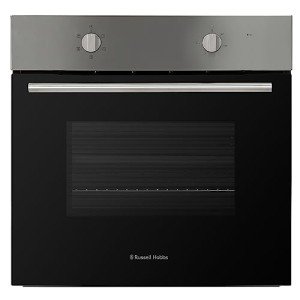Guide To Builtin Ovens: The Intermediate Guide To Builtin Ovens
페이지 정보
작성자 Ewan 작성일25-05-20 09:55 조회3회 댓글0건관련링크
본문

The Rise of Built-in Ovens: Enhancing Modern Kitchens
In the ever-evolving world of home enhancement, built-in ovens have actually become a staple in contemporary kitchen design. These appliances not only offer a smooth and smooth visual but also contribute considerably to the performance and effectiveness of home cooking. This short article explores the numerous elements of built-in ovens, including their benefits, types, setup considerations, and maintenance, together with frequently asked questions to provide a thorough overview.
What is a Built-in Oven?
A built-in oven is an appliance developed to be set up into kitchen cabinets, giving it a structured look and maximizing counter area. Unlike standard freestanding ovens, which stand alone and are often bulky, built-in ovens fit flush with cabinets for a more integrated ovens for sale look. They are offered in different sizes, designs, and features, catering to a large range of culinary requirements and kitchen designs.
Benefits of Built-in Ovens
Built-in ovens included numerous advantages that make them appealing to homeowners. Below are a few of the key advantages:
- Space Efficiency: Built-in ovens conserve counter space while optimizing kitchen designs.
- Personalized Design: They can be best integrated oven uk into kitchen cabinetry, permitting house owners to tailor looks according to personal taste.
- Improved Performance: Many built-in inbuilt ovens come geared up with advanced cooking technologies, permitting better heat distribution and faster cooking times.
- Ease of access: Their setup at eye level makes it simpler to inspect food without bending down, supplying greater convenience and security.
- Resale Value: A modern, properly designed kitchen can improve home value, making built-in ovens an investment worth thinking about.
Kinds Of Built-in Ovens
Built-in ovens can be categorized based on their style and function. The following list describes the common types of built-in Builtin Ovens available on the market:
- Single Ovens: A standard design that includes one cooking compartment.
- Double Ovens: These included 2 separate compartments, which enable cooking numerous dishes at various temperatures.
- Wall Ovens: Installed into the wall for a space-saving service, these intergrated ovens offer benefit and availability and can be either single or double.
- Steam Ovens: These utilize steam for wet cooking and are often favored for much healthier meal preparation.
- Convection Ovens: Designed with a fan that distributes hot air, ensuring even cooking and browning.
| Type | Description | Perfect For |
|---|---|---|
| Single Oven | One cooking compartment for standard baking and roasting. | Small households and kitchens. |
| Double Oven | Two compartments for synchronised cooking of different meals. | Large families with diverse menus. |
| Wall Oven | Built into the wall for easy gain access to. | Space-conscious kitchens. |
| Steam Oven | Cooks using steam for healthier choices. | Health-conscious people. |
| Stove | Circulates hot air for even cooking and quicker outcomes. | Baking lovers and chefs. |
Installation Considerations
Choosing to install a built-in oven includes numerous factors to consider to make sure that it fits seamlessly within the kitchen. Essential elements consist of:
- Cabinet Dimensions: Accurate measurement of the cabinet area needed for the oven is important for an appropriate fit.
- Power Supply: Built-in ovens usually require a devoted power supply; consulting a licensed electrical expert might be necessary.
- Ventilation: Ensure that the oven's ventilation requirements are satisfied to promote safe operation.
- Local Building Codes: Compliance with local codes is vital when installing any kitchen appliance.
It's highly advised that installation be performed by specialists to make sure safety and adherence to producer specifications.
Upkeep of Built-in Ovens
Keeping built-in ovens is necessary to guarantee their durability and operation. Below are some ideas for effective upkeep:
- Regular Cleaning: Wipe down surface areas after each usage to prevent build-up; consider self-cleaning alternatives if readily available.
- Inspect Seals: Inspect the oven door seals frequently for wear and tear to keep effectiveness and prevent heat loss.
- Calibrate Temperature: Occasionally check and adjust oven temperature settings if cooking outcomes are inconsistent.
- Professional Servicing: Schedule regular upkeep with certified technicians for electrical parts and deeper cleaning.
Frequently Asked Questions (FAQs)
Q1: How do I select the right size built-in oven for my kitchen?
A1: Measure the readily available cabinet area and think about the cooking habits of your family. Single or double ovens prevail options based on meal preparation requirements.
Q2: Are built-in ovens more energy-efficient than freestanding ones?
A2: Built-in bulit-in ovens can be more energy-efficient due to better insulation and advanced cooking technology; however, real effectiveness depends upon the particular design and use.
Q3: Can built-in ovens be set up throughout the kitchen?
A3: Built-in ovens require particular cabinets and may require a devoted source of power, so preparing their placement thoroughly within the kitchen design is essential.

Q4: What type of maintenance do built-in ovens need?
A4: Regular cleansing, examining door seals, calibrating temperature levels, and professional maintenance as required are all elements of correct maintenance.
Built-in ovens are an impressive addition to modern cooking areas, providing both aesthetic and useful advantages. Their space-saving style, customizable alternatives, and advanced features accommodate varied cooking requirements. When considering a built-in oven, homeowners must consider their specific cooking choices, Builtin Ovens kitchen layout, and upkeep capabilities. By doing so, they would be making a valuable financial investment in their home, increasing both performance and design.
댓글목록
등록된 댓글이 없습니다.
